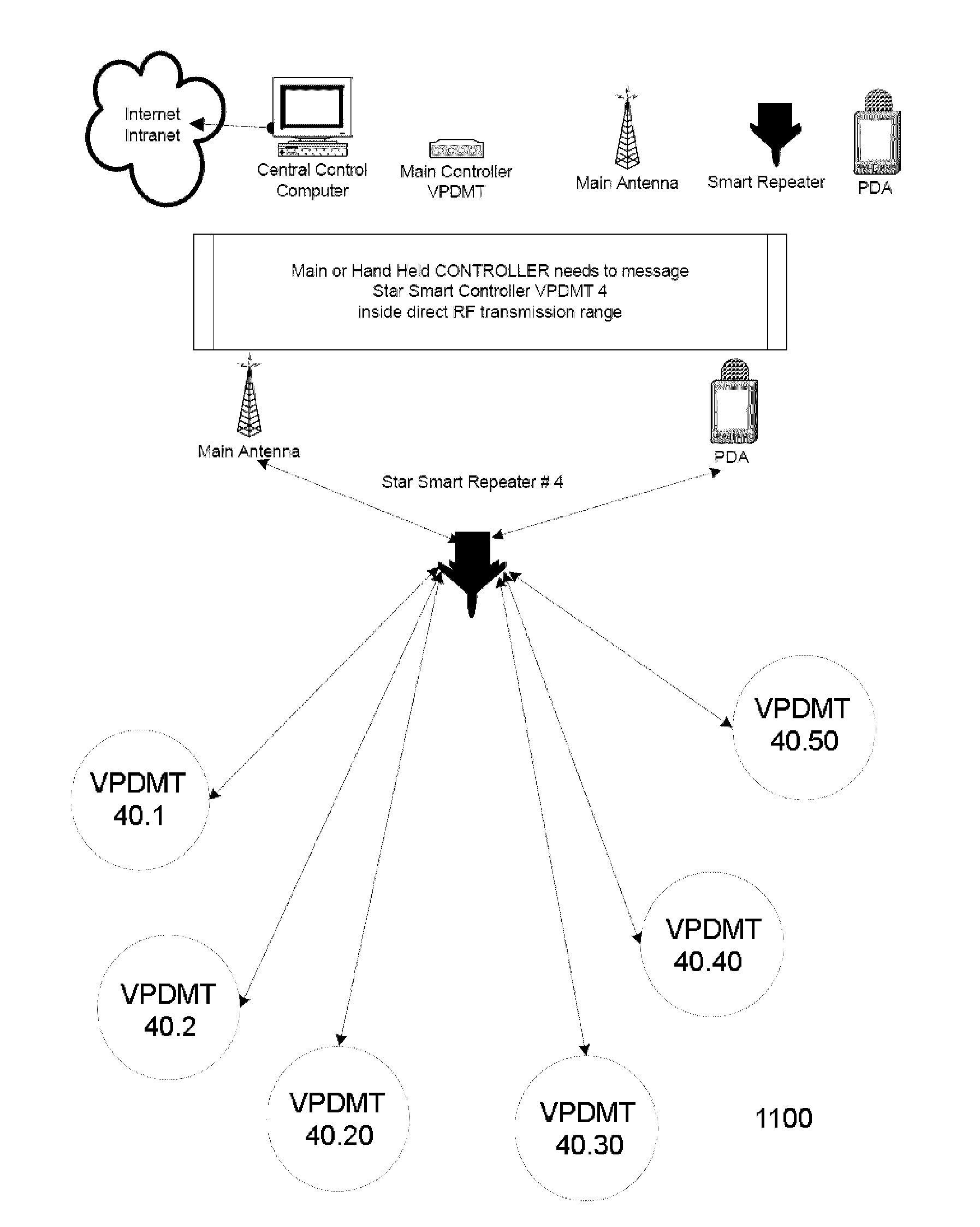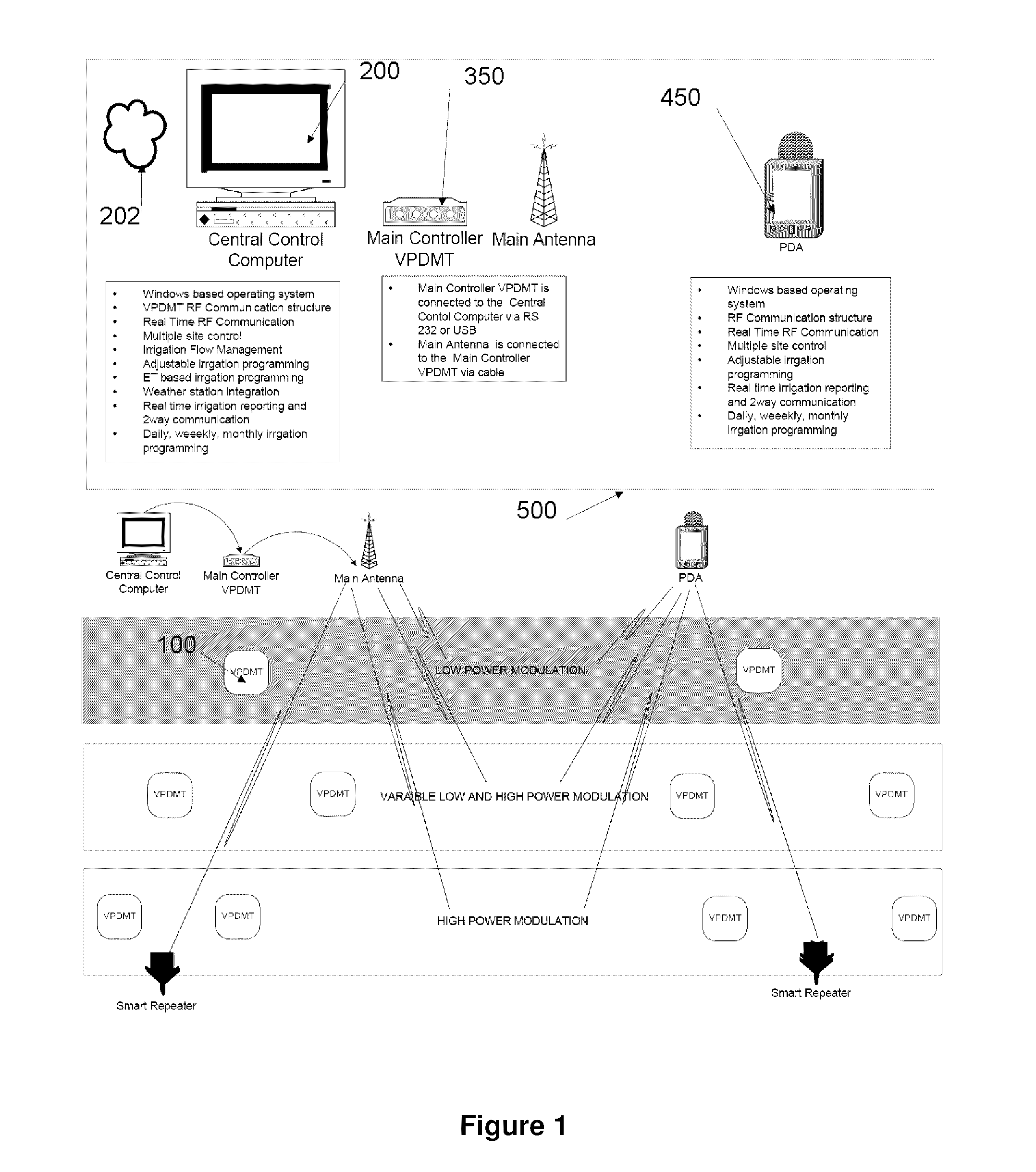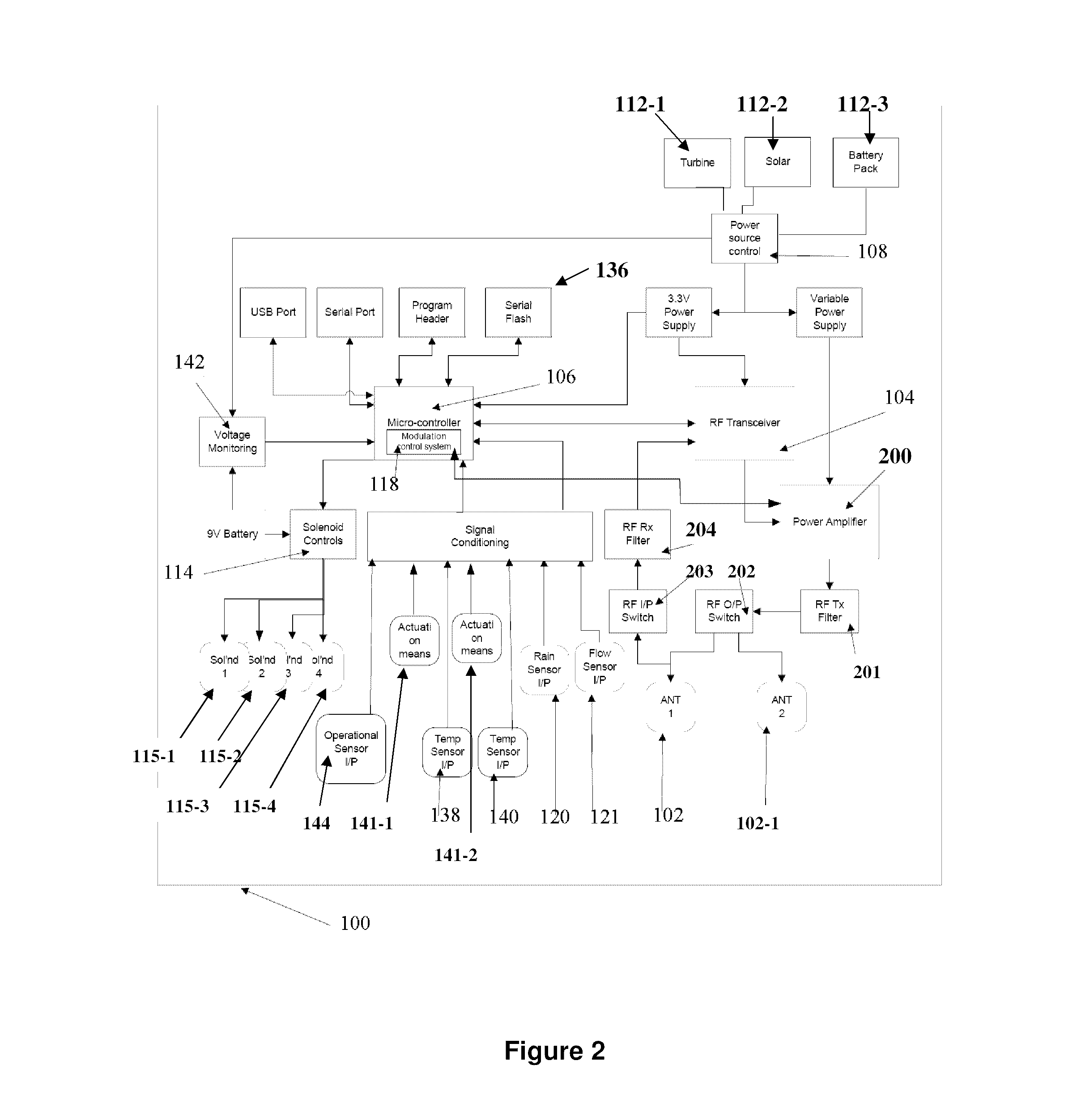Wireless control system using variable power dual modulation transceivers
a radio frequency transceiver and variable power technology, applied in the direction of receivers, wireless communication, near-field systems, etc., can solve the problems of limiting the duration channel transmission time and maximum power output levels of both low, wired systems, and licensing costs add to the creation, scalability and maintenance costs of any system using wireless communication methods
- Summary
- Abstract
- Description
- Claims
- Application Information
AI Technical Summary
Benefits of technology
Problems solved by technology
Method used
Image
Examples
example 1
Wireless Irrigation Management System for a Golf Course
[0273]The Wireless Irrigation System (WIS) can control and monitor a golf course battery operated irrigation system from one central computer or portable personal digital assistant (PDA) or from a system of smart repeaters or gateways without the need for embedded wiring. There is no limit to the number of valves, sprinkler or sensor stations that can be controlled, allowing for complete water management. The specification below outlines the requirements for the design and development of the electronics and software for the central computing device, hand held unit, main controller, smart repeater and valve or sprinkler head.
[0274]The WIS comprises six individual components: Central Control Computer (CCC), Irrigation System Software (ISS), Main Control Unit (MCU), PDA Control Unit (PDACU), Smart Repeater / Gateway Control Unit (SRCU) and Irrigation Activation Unit (IAU). The MCU and the PDACU are independent control units that can ...
example 2
Configuration of a Wireless Irrigation Control System
[0312]An example wireless control system according to another embodiment of the present invention is configured to provide the following aspects. The wireless control system uses a bidirectional VPDM data communication scheme for communication with wireless irrigation controllers that are configured to enable control of the irrigation system at the sprinkler valves that perform the irrigation using corresponding VPDMT modules. The example wireless control system may be configured to perform predetermined aspects of an irrigation program without requiring the use of one or more of AC power, field controllers, satellite stations, decoders or hard wired communication links. In one embodiment, the system may be configured to perform one or more predetermined aspects of an irrigation program without requiring the use of a central controller. The VPDMT modules are configured for use in combination with DC latching solenoid valve actuato...
PUM
 Login to View More
Login to View More Abstract
Description
Claims
Application Information
 Login to View More
Login to View More - R&D
- Intellectual Property
- Life Sciences
- Materials
- Tech Scout
- Unparalleled Data Quality
- Higher Quality Content
- 60% Fewer Hallucinations
Browse by: Latest US Patents, China's latest patents, Technical Efficacy Thesaurus, Application Domain, Technology Topic, Popular Technical Reports.
© 2025 PatSnap. All rights reserved.Legal|Privacy policy|Modern Slavery Act Transparency Statement|Sitemap|About US| Contact US: help@patsnap.com



